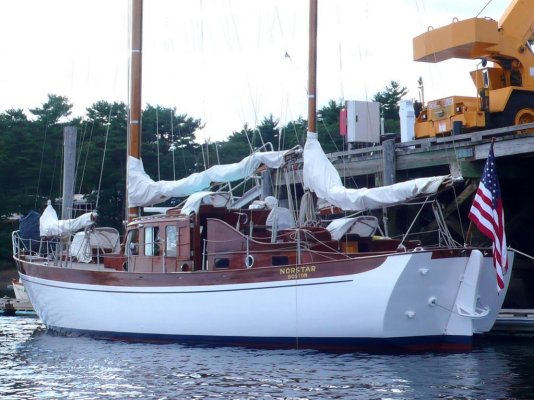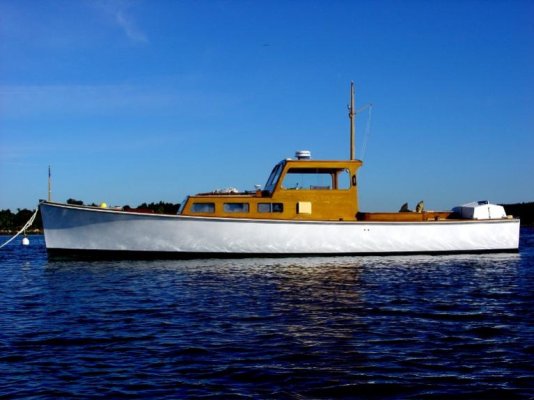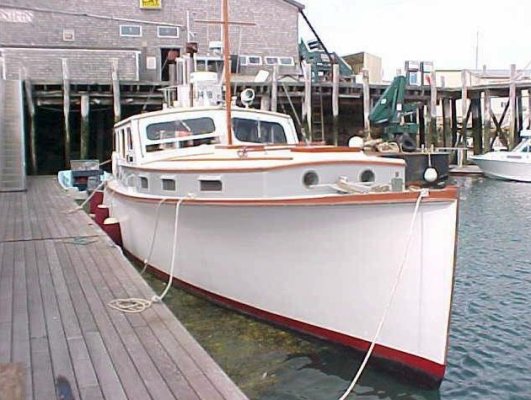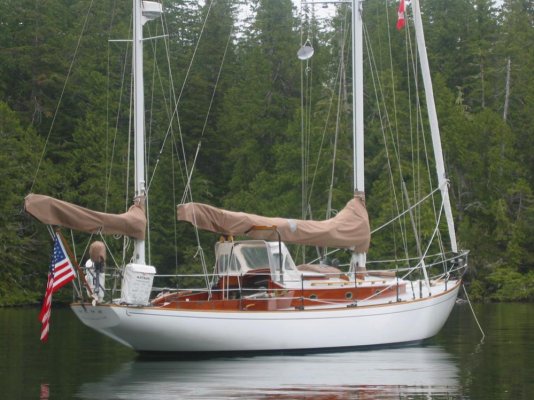Tad Roberts
Guru
I learned about planking coves from a long-time shipwright on the Grand Banks owners forum. According to him, their purpose is purely cosmetic. On a wood boat with carvel (as opposed to lapstrake) planking on the hull, the planks will work slightly and eventually this working will crack the paint along the plank joints. As we all know from having seen this on carvel-planked wood boats, it's pretty ugly.
So a long, long time ago somebody came up with the idea of planing an angle on the longitudinal edges of the hull planks (or carving one after the planks were installed) and this V-groove would render the cracks in the paint that would inevitably appear either invisible or nearly so, since they would be down in the bottom of the groove.
Over time, the look became synoymous with higher-end wood boats. So when American Marine, for example, who coved the longitudinal joints in the hull planks on their Grand Banks line of boats, switched that line from wood to fiberglass in mid-1973, they wanted the glass boats to be as identical as possible to the wood boats. So Howard Abbey included plank coves in the hull molds he designed and built for the glass GBs.
It's a good story, but it's just that...a story.
Coving seams is styling, that's all. It's not synonymous with higher-end wood construction, but it is almost synonymous with wooden boats built in Asia and some from the West Coast of NA. You will not find any higher-end yachts built in northern Europe or the US East Coast with coved seams.
In carvel-planked higher-end yachts you will have to look long and hard to find the seams at all. In more pedestrian craft the seams are obvious, but there was never any intention to make something that looks like fiberglass. Topside seams are caulked and puttied before painting, the putty expands and contracts with the movement of the wood. Modern (hard) paint often cannot deal with this movement and it might crack after a few years. Planking seams tell stories about the guys who did the work originally, and maintenance along the way, and the weather currently.....It's the real thing and far more interesting than plain shiny plastic.
Some higher-end yachts from builders who would be horrified at coved seams......




